14 Most Valuable Spode China Pieces You Should Look Out For
Spode China has a long history of creating beautiful and collectible pieces. Many of these designs were first released in the late 1700s and early 1800s. They quickly became popular for their detailed patterns and fine quality. Today, collectors value these pieces for both beauty and heritage. With so many designs available, some have become especially sought after.
This post may contain affiliate links, which helps keep this content free. Please read our disclosure for more info.
Spode Blue Italian
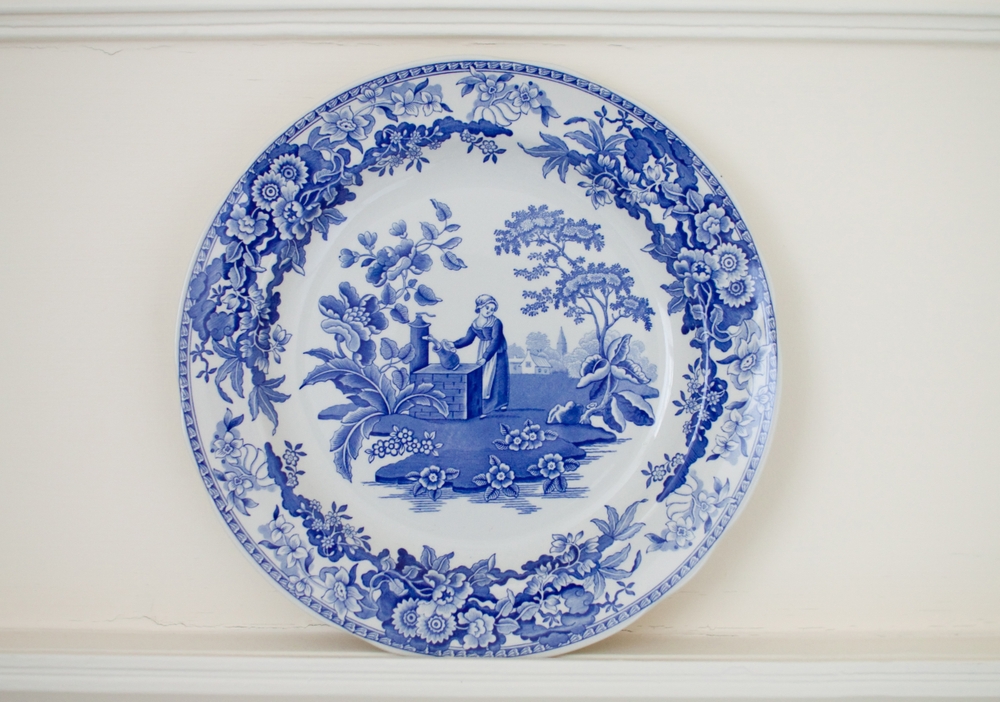
Spode introduced the Blue Italian pattern in 1816. The design features pastoral scenes framed by intricate borders inspired by Italian countryside art. It became one of the most recognizable and longest running patterns in Spode’s history. Collectors admire its timeless look and durability. Today, this piece continues to be a staple in antique markets.
Original dinner plates in excellent condition can fetch between $100 and $250 each. Complete sets with serving platters and teapots may bring $1,500 or more. Many collectors prize earlier 19th century editions most. Reproductions exist, but genuine antique Blue Italian commands higher prices. Auction houses often highlight this pattern due to its steady demand.
Spode Tower
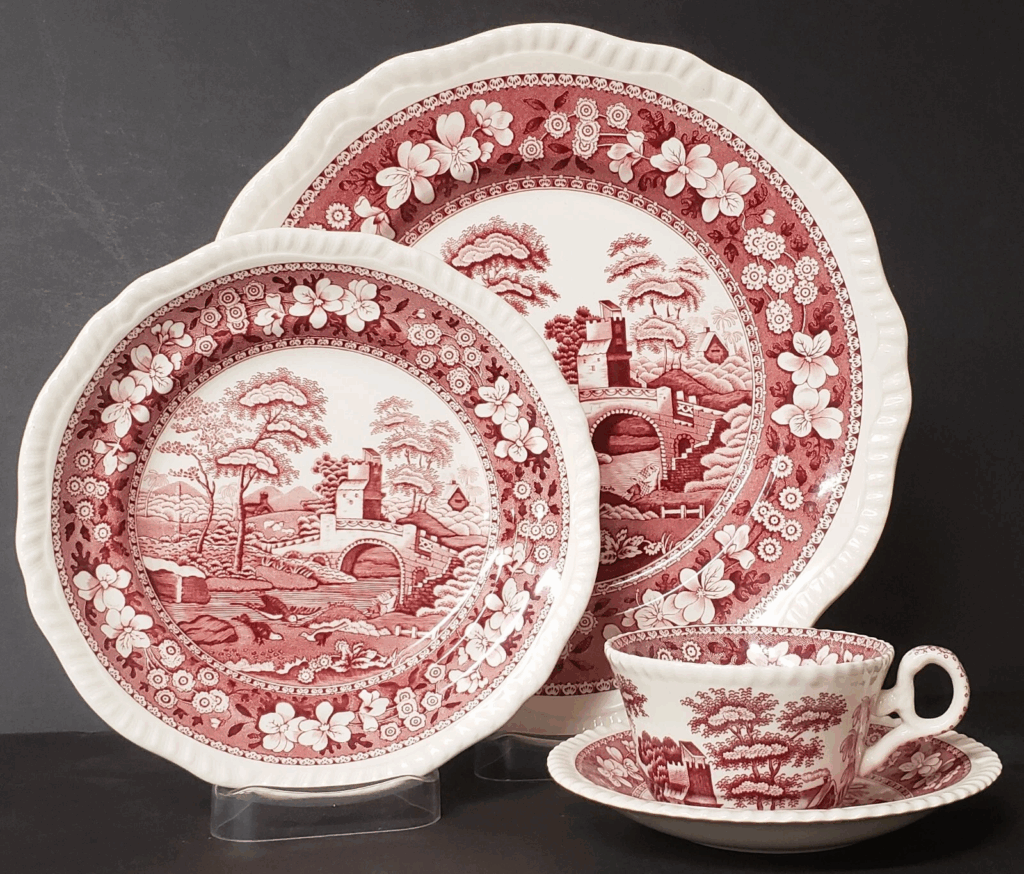
The Spode Tower pattern appeared in the early 19th century. Its design depicts the Bridge of Salaro in Italy with detailed red or blue transferware. Collectors value it for its historical and artistic significance. Tower pieces were produced both in dinnerware and serving dishes. Many examples have survived in good condition.
Individual dinner plates range from $100 to $300. Larger serving platters often bring $800 or more at auction. Complete sets in red are more rare than blue versions and often sell higher. Early 19th century originals carry the strongest values. Collectors look for clear transfer prints and minimal wear.
Spode Fleur de Lys Gold
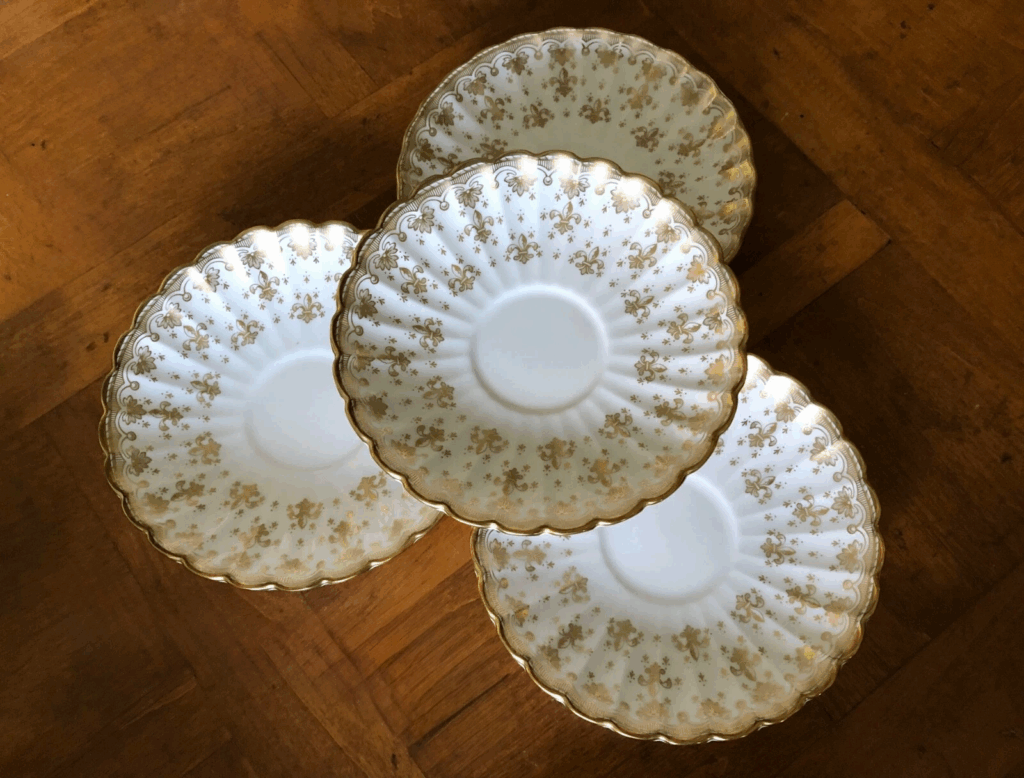
The Fleur de Lys Gold pattern was introduced around 1820. This fine bone china features a rich cobalt blue ground with gold fleur de lys motifs. It was considered a luxury line aimed at high society households. The striking design made it popular in wealthy English estates. Today, it remains one of Spode’s most collectible patterns.
A single dinner plate can sell for $200 to $400. Rare tea sets and tureens may reach $2,000 or more. The value depends on the condition of the gilt detailing. Collectors prize complete tea services with original trays. Museums often include examples in decorative arts collections.
Spode Chinese Rose
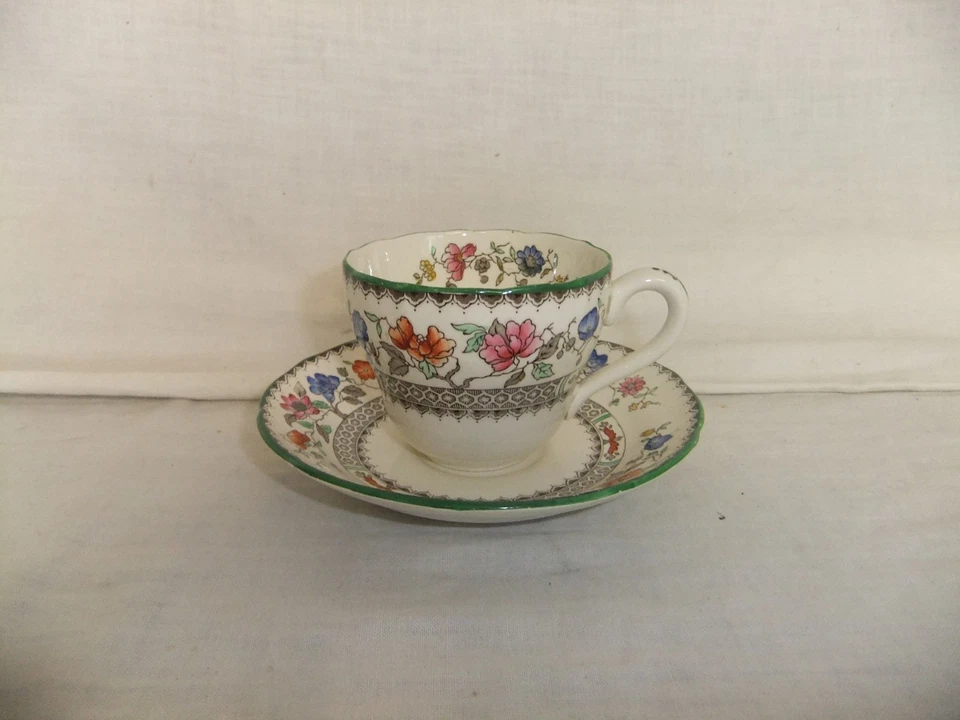
The Chinese Rose pattern came out in the early 19th century. It reflects an interest in Asian-inspired designs that were fashionable in Europe at the time. The pieces feature floral motifs in pinks, blues, and greens with a traditional border. Collectors value its balance of color and detail. This design was widely exported to America as well.
Plates in good condition often sell for $150 to $300. Tea cups and saucers usually fall in the $100 range. Larger serving bowls can exceed $600. Complete services with minimal wear are highly sought after. Collectors focus on early hand-painted examples.
Spode Trade Winds
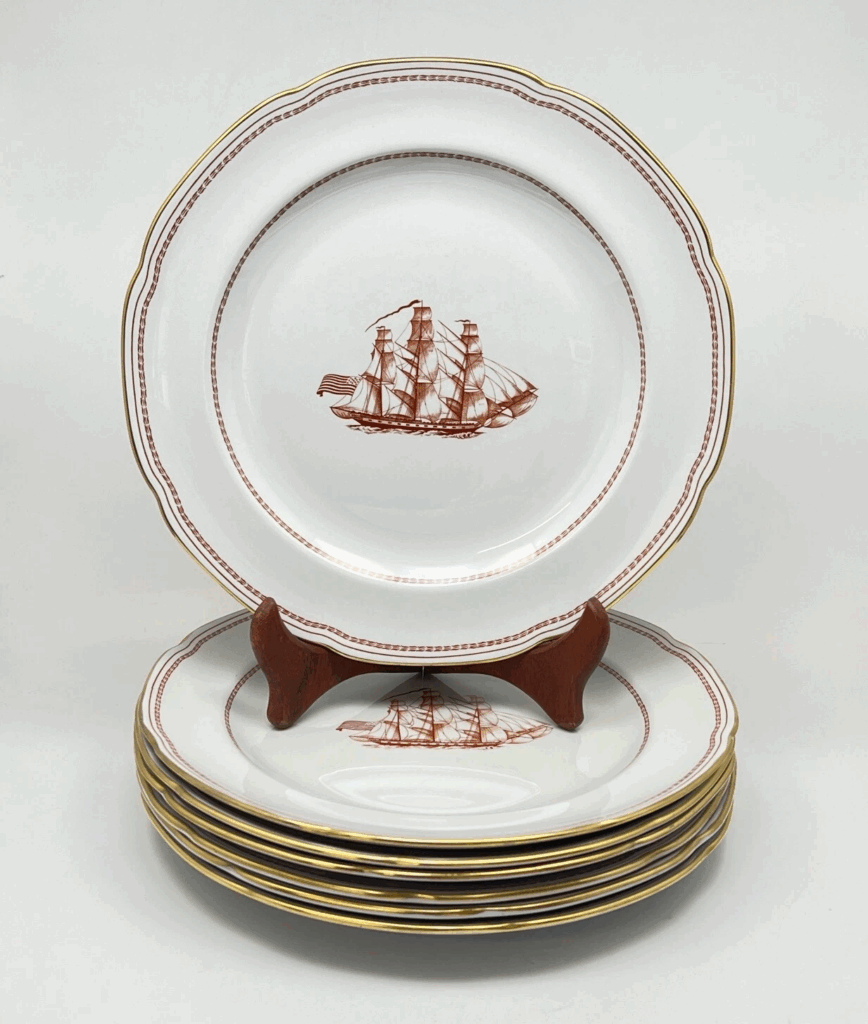
The Trade Winds pattern was released in the mid-20th century. It features images of sailing ships with detailed rigging and names marked below. Produced in red, blue, and brown transferware, it appealed to collectors of maritime themes. It remains popular with nautical enthusiasts. Many households in coastal areas still keep these sets.
Dinner plates typically sell for $50 to $150. Serving platters and tureens bring $300 to $600. Full sets in excellent condition can reach $1,200 or more. The red version is slightly more rare than the blue edition. Collectors prize pieces with clear ship names and minimal fading.
Spode Buttercup
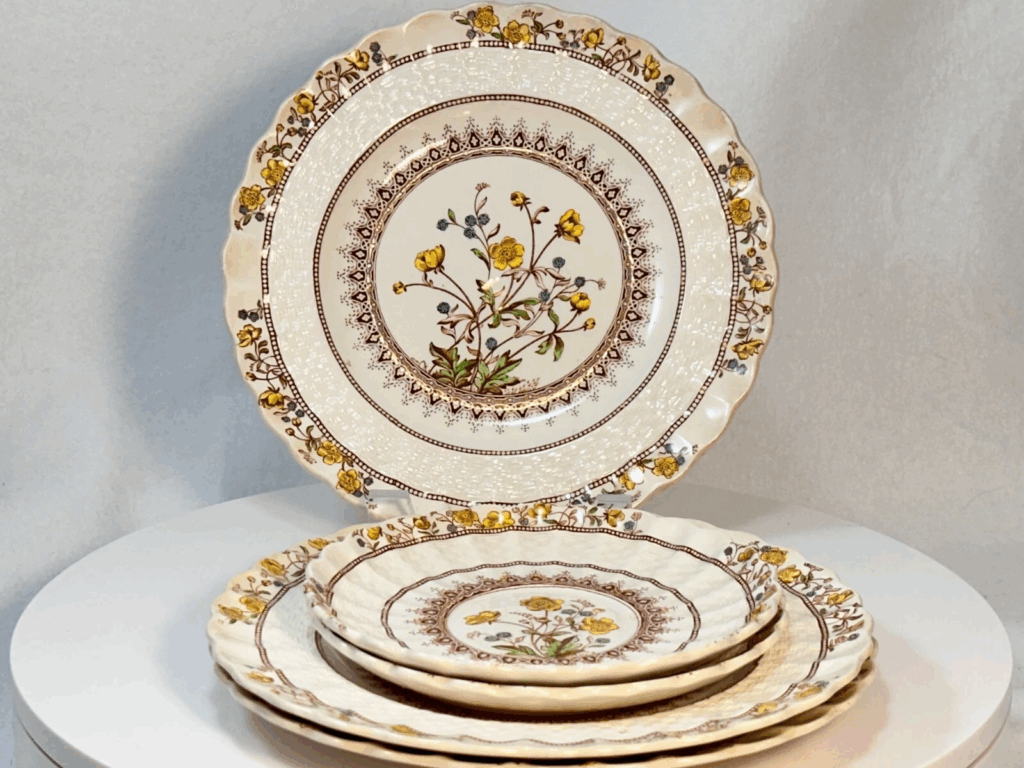
The Buttercup pattern was first introduced in the 1920s. Its design showcases yellow and orange buttercup flowers with a delicate green vine border. It quickly became a cheerful addition to spring and summer table settings. Collectors admire it for its vibrant color and English garden charm. Production ran for several decades, making it widely available but still valuable.
Plates usually sell for $40 to $120. Tea sets in mint condition may reach $400. Serving platters and rare pieces like covered dishes can sell for $700. Full matched dinner services are popular with collectors. The design is still recognized for its warm and inviting look.
Spode Woodland
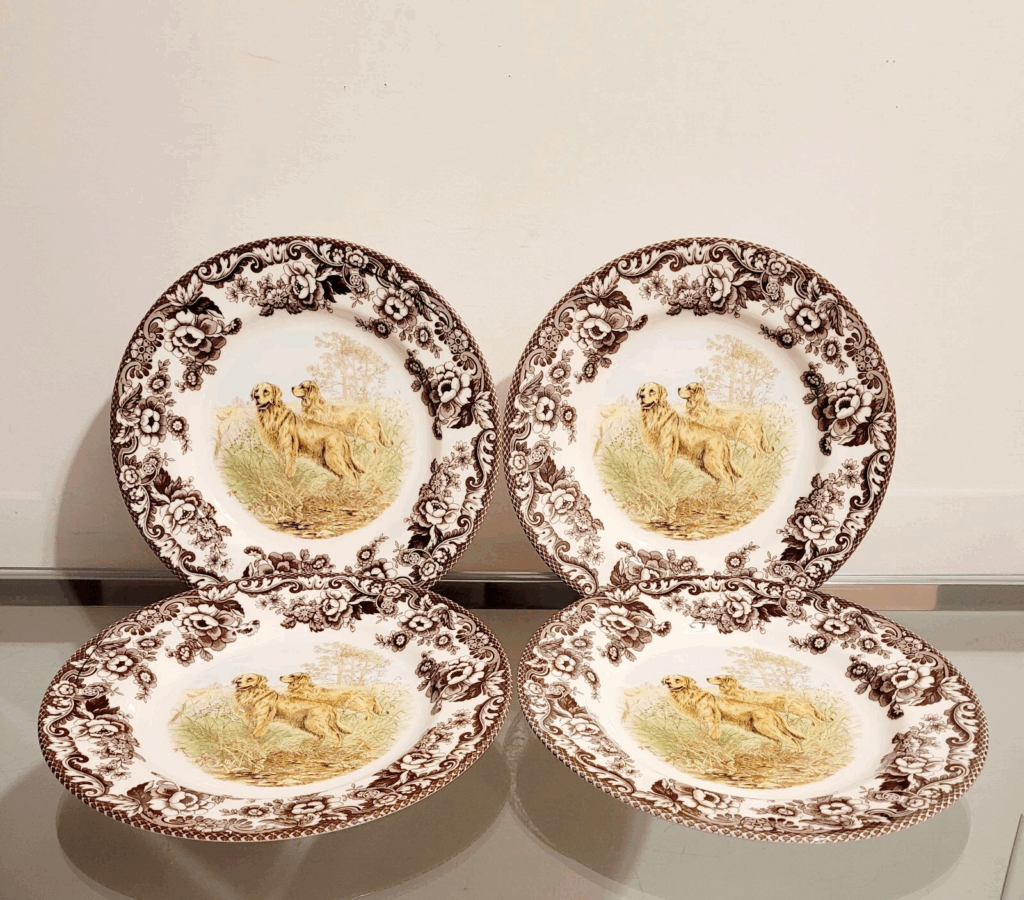
The Woodland pattern was released in 1990, inspired by traditional British hunting scenes. It features images of game animals like deer, pheasants, and rabbits surrounded by floral borders. While newer than many other Spode patterns, it quickly gained collectible status. Hunters and nature enthusiasts enjoy its detailed artwork. Seasonal production increases its desirability.
Plates generally sell for $30 to $100 each. Serving bowls and larger trays can fetch $200 to $500. Limited edition runs of specific animals are valued higher. Collectors often buy individual pieces to complete personal sets. Early releases from the 1990s are more sought after today.
Spode Christmas Tree
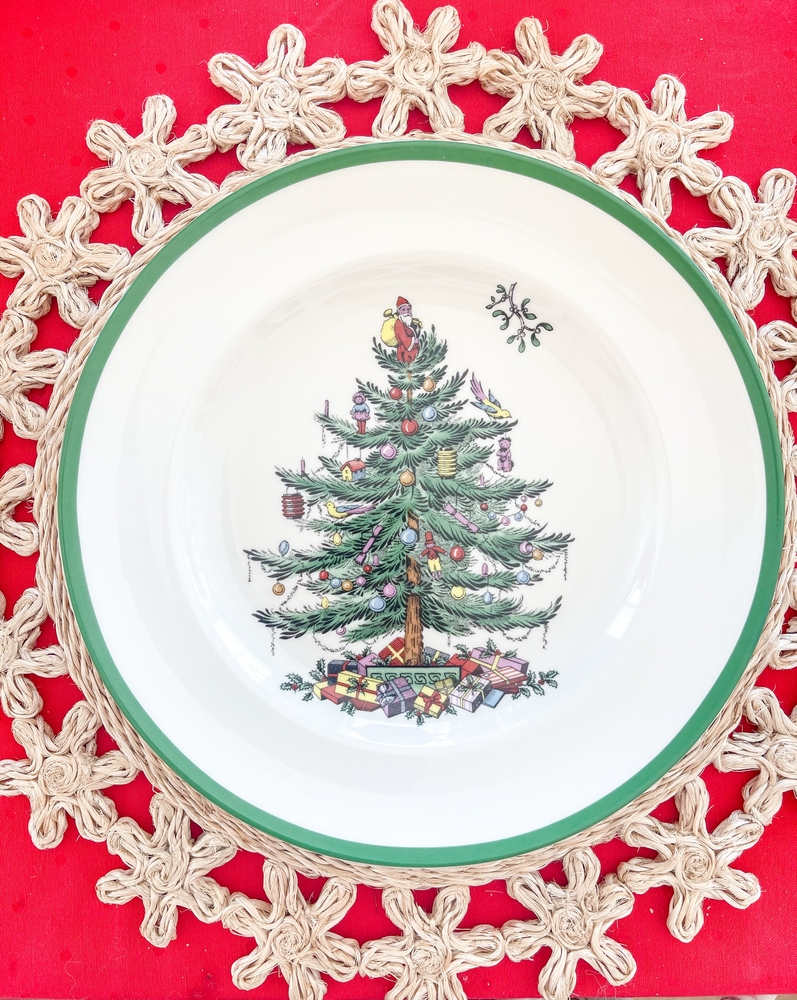
The Christmas Tree pattern was released in 1938. It showcases a decorated holiday tree with toys and presents beneath, making it one of Spode’s most festive designs. It quickly became popular in households during the holiday season. Production continued for decades, with older versions now seen as collectibles. The design is tied to traditional celebrations and nostalgic value.
Vintage plates and mugs from the early years are valued between $50 and $200 each. Rare serving dishes from the mid-20th century can reach $500. Full holiday dinner services may reach $2,000 depending on condition. Many families still collect and add to their sets every year. Original packaging further increases the appeal for collectors.
Spode Camilla
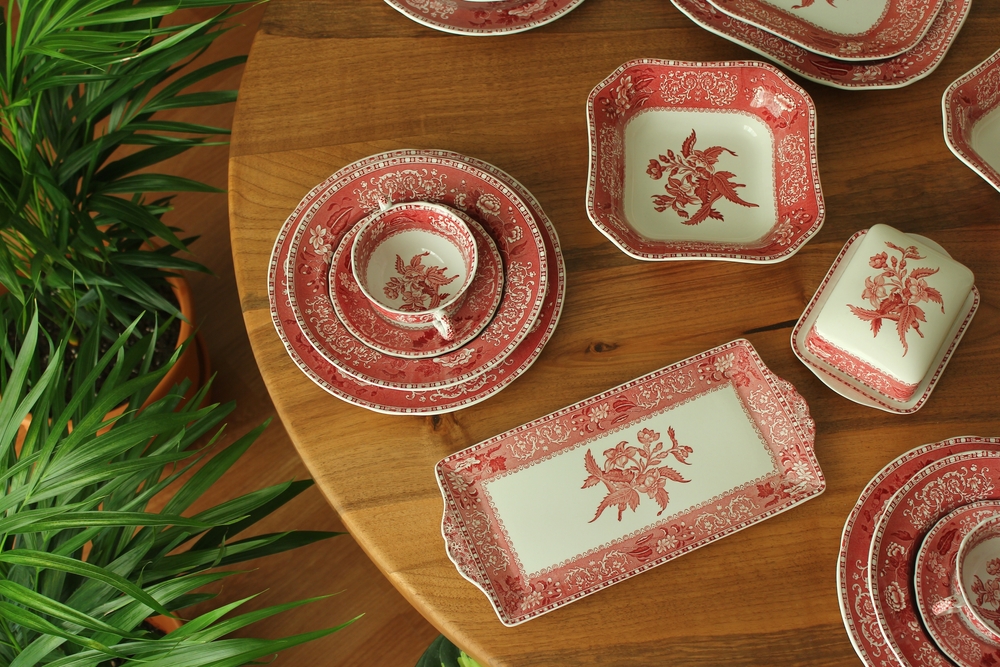
Spode introduced Camilla in the 1830s. The pattern features intricate floral designs available in colors such as blue, green, and pink. Its soft yet detailed look made it a popular household favorite. Camilla was produced in dinnerware, serving dishes, and teapots. Many early examples remain collectible today.
Dinner plates average between $100 and $200. Large tureens or serving platters may reach $700 or more. Complete services command strong prices at auction. Collectors look for pieces with minimal wear and strong color. Camilla remains one of the better-known floral patterns from Spode’s 19th-century lines.
Spode Byron
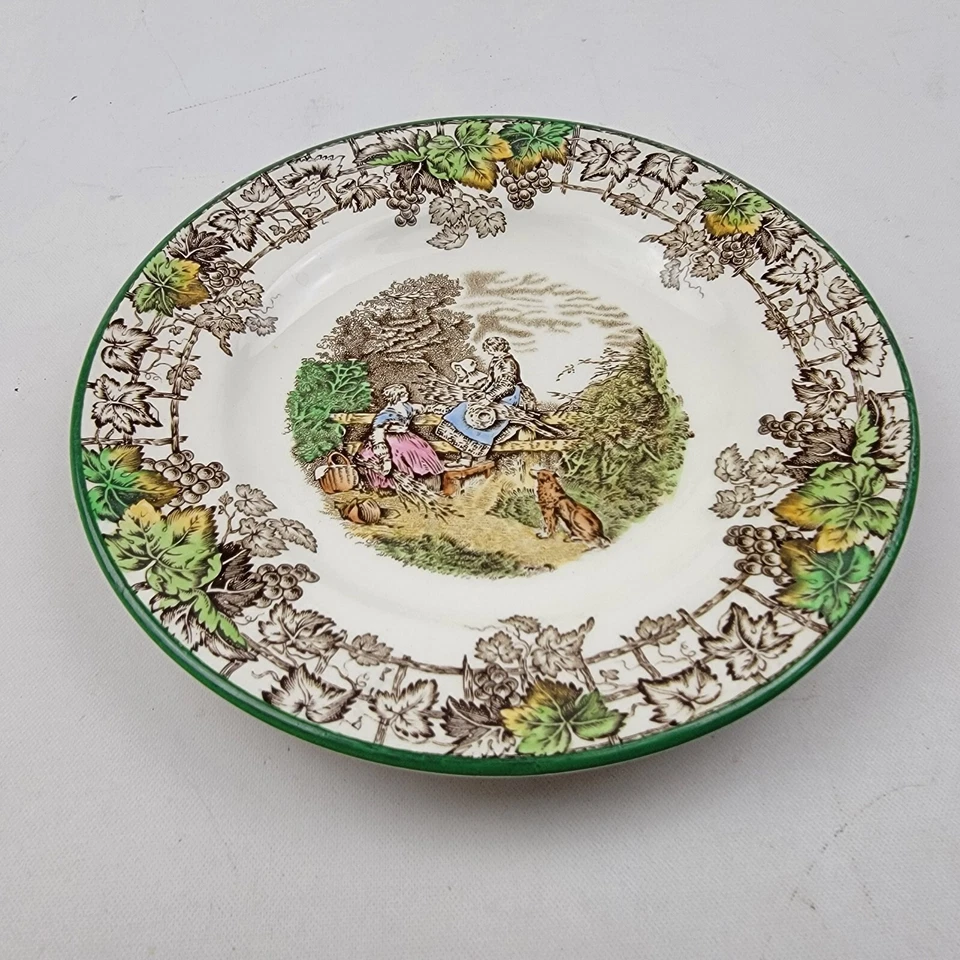
The Byron pattern was released in the late 19th century. It showcases romantic scenes in soft brown transfer prints. Inspired by the works of poet Lord Byron, the design appealed to Victorian sensibilities. It was sold in both Europe and North America. Collectors value its literary association and detailed imagery.
Plates typically bring $80 to $150. Large serving dishes or tureens can sell for $400 to $600. Complete dinner sets are harder to find and may exceed $1,200. Early versions with clear maker marks sell at the higher end. Byron remains a favorite among literary and Victorian collectors.
Spode Rosebud Chintz
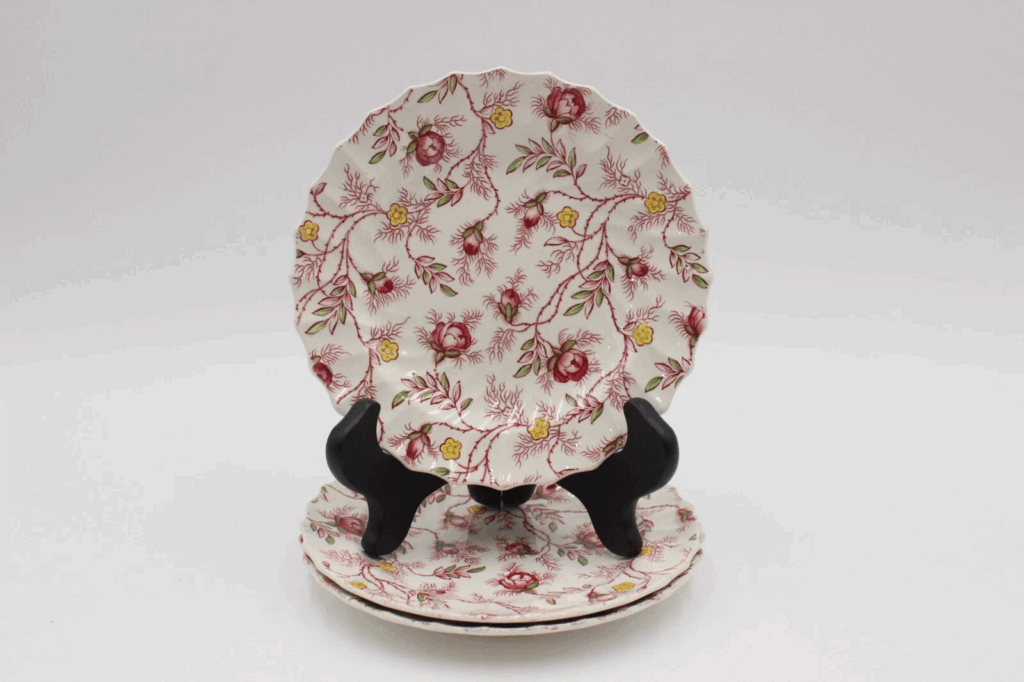
Released in the early 20th century, Rosebud Chintz showcases small rose patterns scattered across the surface. The overall design gives a fresh, garden-like feel. It was especially popular during the 1930s and 1940s. The pattern was produced on a variety of dinnerware and tea sets. Collectors enjoy its lighthearted charm and romantic detail.
Plates usually sell for $40 to $100. Tea sets with teapots may reach $400 or more. Serving trays and covered dishes bring higher values at auction. Matching sets in excellent condition are in demand. Collectors focus on pieces with vivid color and intact glaze.
Spode Reynolds
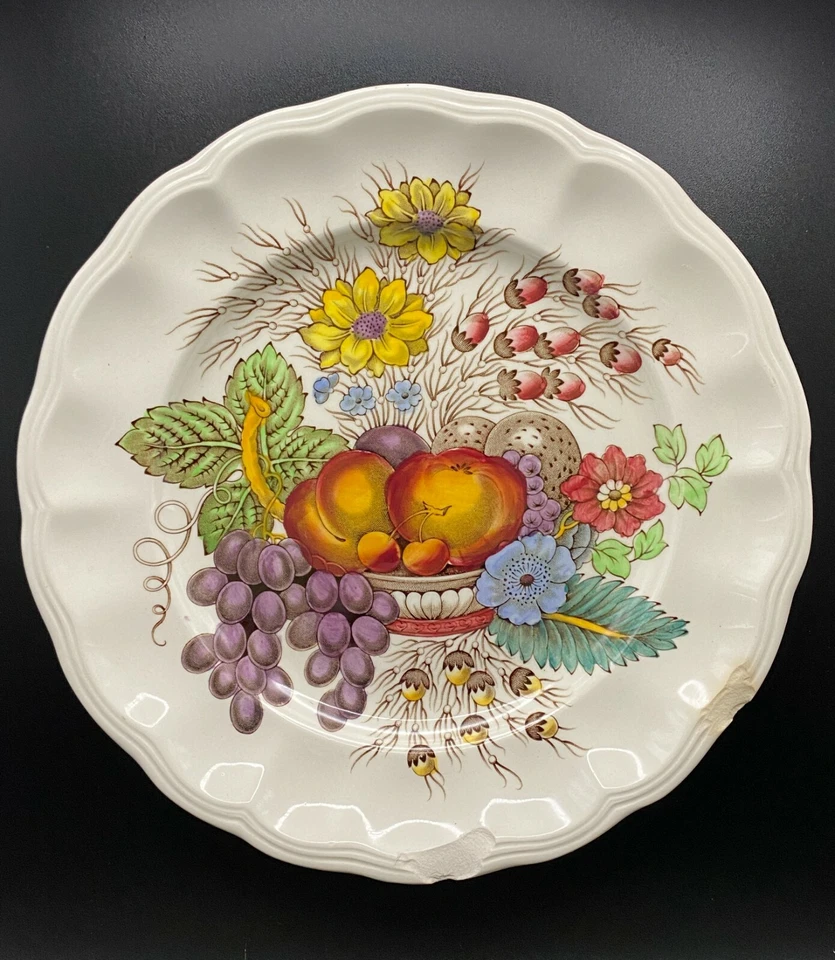
The Reynolds pattern emerged in the mid-19th century. It often depicted elaborate floral scrolls and came in blue or green transfer designs. The pattern was associated with elegance and was sold across Europe. Many examples were exported to the United States as well. Reynolds remains well-known among Spode enthusiasts.
Dinner plates typically sell for $80 to $200. Serving platters may bring $500 or more. Complete sets in original condition are highly collectible. Early marks increase the value. Collectors focus on transfer clarity and condition of glaze.
Spode Gainsborough
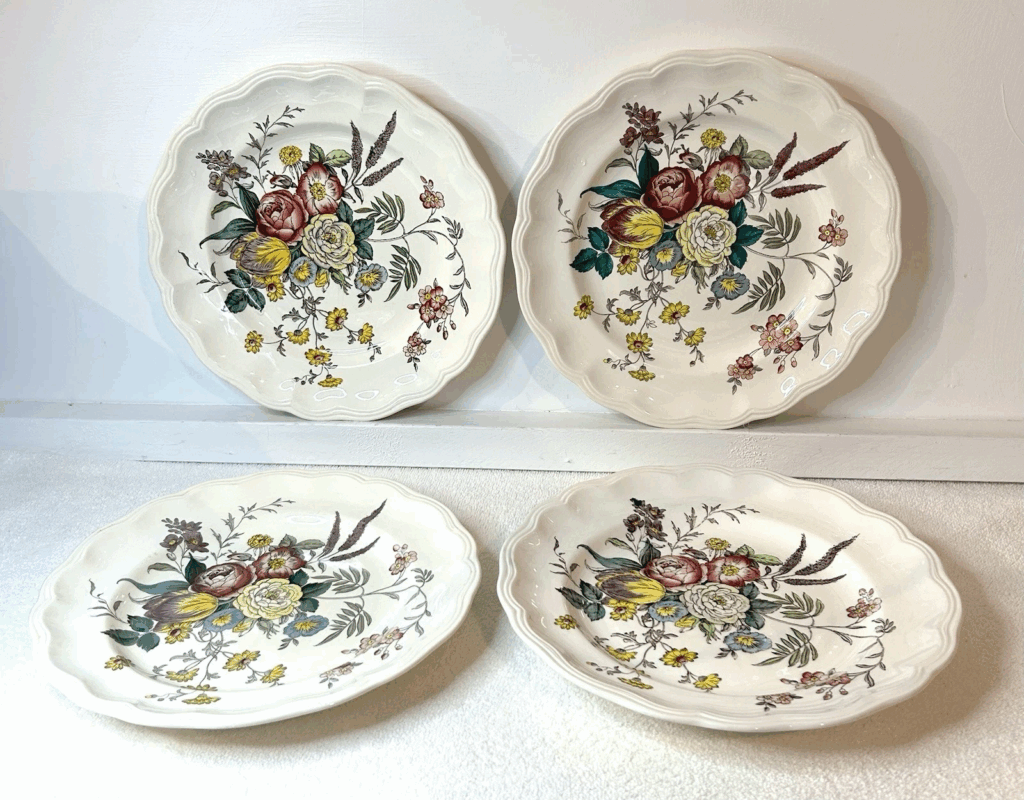
The Gainsborough pattern was introduced in the early 20th century. It features floral sprays with soft color tones, often highlighted with gold trim. The name reflects a connection to English artistic heritage. It was popular in middle-class households and remains collectible today. Tea sets in this design are especially attractive.
Plates usually range from $40 to $120. Full dinner services may reach $800. Tea services with gold trim in mint condition can sell for $600. The pattern is valued for its delicate charm and gentle colors. Collectors look for examples with intact gilt edges.
Spode Aesop’s Fables

This pattern was produced in the 19th century with illustrations inspired by Aesop’s fables. Each piece featured different scenes of animals with moral lessons. It was marketed to families and children as both decorative and educational. The design is admired for its storytelling quality. Original examples are rarer today.
Individual plates often sell for $150 to $300. Rare larger dishes or serving bowls can exceed $800. Complete collections with multiple fable scenes are valuable. Collectors focus on clarity of the transfer images. This pattern is especially prized by both china and book collectors.
Collecting Spode china is both rewarding and enjoyable for those who value history and fine detail. Each piece carries a story from its release to its place in homes and collections today. Market values continue to reflect the importance of condition and rarity. Take the time to look for authentic Spode items that can enrich your collection.
This article originally appeared on Avocadu.
